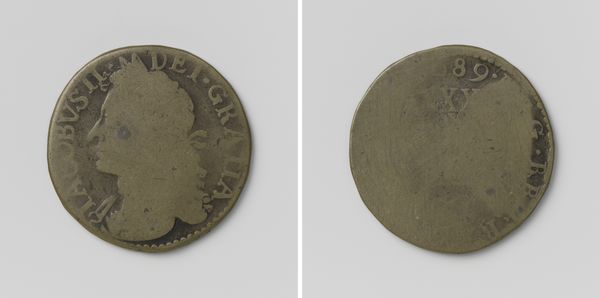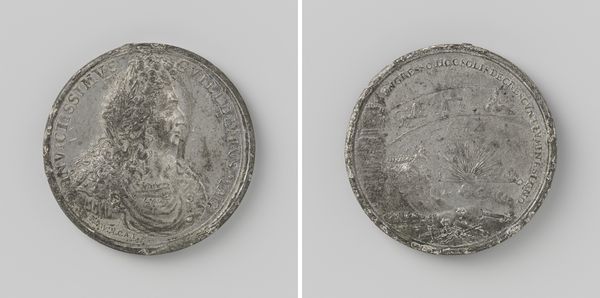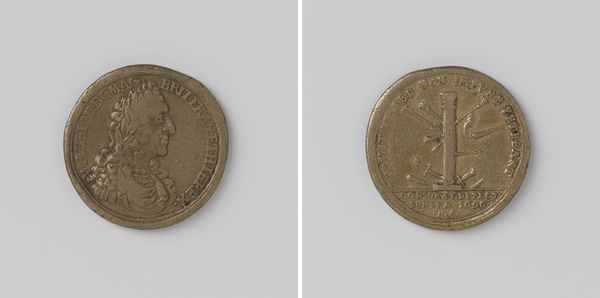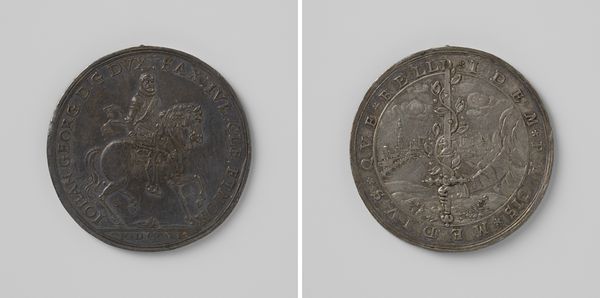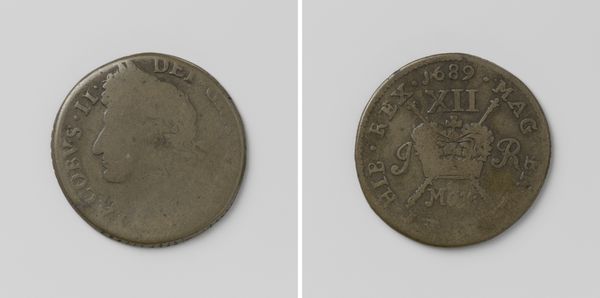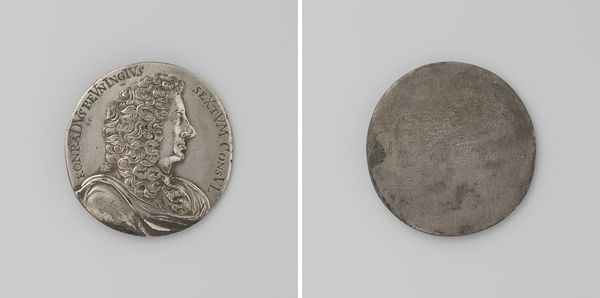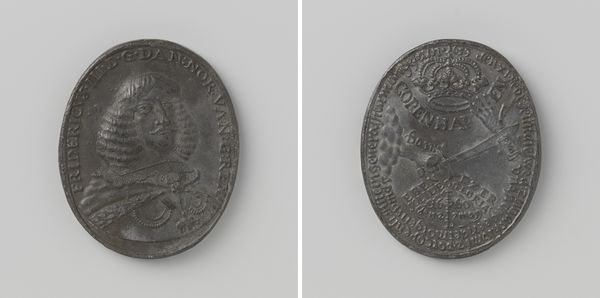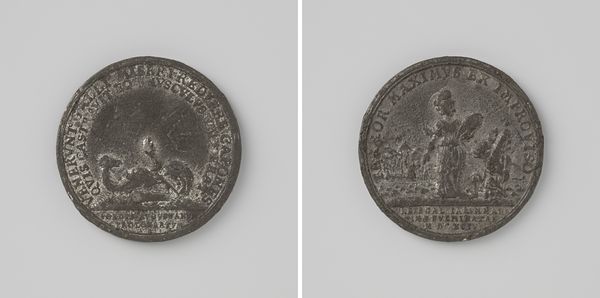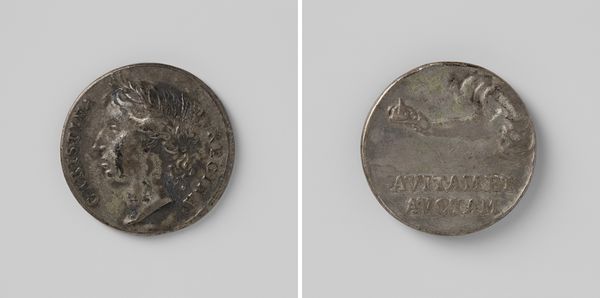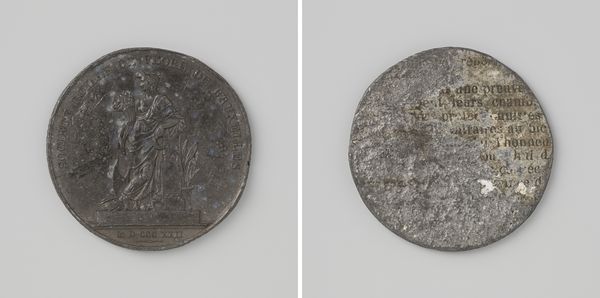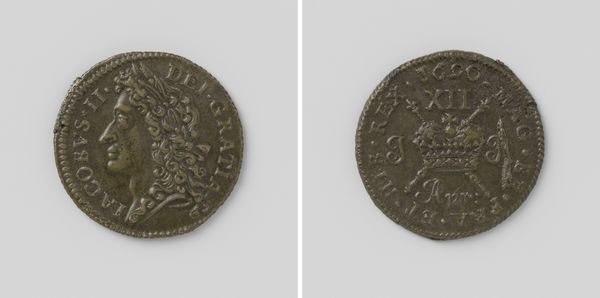
metal, relief
#
portrait
#
neoclacissism
#
metal
#
relief
#
history-painting
Dimensions: diameter 5.5 cm, weight 44.91 gr
Copyright: Rijks Museum: Open Domain
Curator: Here we have an example of a medal produced in 1825 depicting Willem I Frederik, King of the Netherlands. It's currently held here at the Rijksmuseum. Editor: My immediate impression is one of austere authority, rendered in miniature. The monochromatic relief emphasizes the sharp lines of the king's profile, giving it an almost sculptural presence. Curator: Indeed. The piece functions as a historical marker. Willem I took power in 1815 after Napoleon's defeat and these medals would have been important tools in constructing a public image and asserting legitimacy. It's fascinating how art is employed in service of statecraft. Editor: Yes, but look at how the artist has employed neoclassical ideals, a subtle grandeur. The clean, spare lines, the classical profile – it’s designed to evoke an association with Roman emperors, a connection to timeless power and virtue. The lettering surrounding the relief almost mimics the structure one sees in ancient coinage. Curator: Precisely, this medal aimed to position Willem within a historical narrative of strong, capable rulers. The choice to use a material like metal lends an air of permanence and resilience too, important considering the social and political turbulence of the era. This medal was meant to circulate, subtly reinforcing the king’s position with every exchange. Editor: Note the artist has skillfully manipulated light and shadow to lend the King's visage considerable weight. It also invites scrutiny; the more one looks at the shape and modeling of the subject's head and shoulders, the more engaging it becomes. The play of line and light elevate the piece beyond mere record-keeping, beyond its immediate historical context. Curator: Absolutely, considering these pieces would be physically distributed, this type of state-sponsored art offered accessibility to a monarch who was still quite distant from most of his subjects. Think about the act of physically holding the piece – there is an undeniable feeling of proximity to power, both for a royalist but also even in defiance. Editor: Yes, I’d agree. As a singular object, what seems an expression of national power can equally become an object that reminds one of an isolated and introspective, burdened ruler. The simplicity of its materials underscores the clarity of its message. A study in contrasts that rewards deep reflection. Curator: Well, whether intended or not, I think it serves as a potent reminder of the intersection of art, power, and the construction of identity in the early 19th century. Editor: Indeed. The effectiveness of the rendering creates layers of interpretive possibilities that transcend period specificity.
Comments
No comments
Be the first to comment and join the conversation on the ultimate creative platform.

